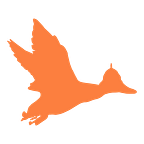Why you should experiment more with your creative work
Experimenting in design work is an integral part of the process. However it can sometimes be forgotten about in the pressure of deadlines and targets. I want to share 3 ways I experiment within my role as a graphic designer.
First, a little bit about me.
As a designer coming from an Art & Design background, I was always pushed to experiment, and be free with my processes. In fact, in an art degree the process is arguably the most important part. It is often the context which gives the work a deeper meaning.
My art degree still informs my work today, not in the outcomes, but in the experimentation. The evolution and iteration. The natural growth of a project, as you find better paths to your goal.
So, here are 3 ways I experiment in my day-to-day:
1. Experiment in your sketchbook
While I didn’t actually have to use a sketchbook while at uni (evidence and research is recorded on blogs instead these days), I still found it to be a super useful tool. And this is a tool I continue to use throughout my days. Whether I’m working on a website, a graphic or a magazine, I’m constantly sketching out layouts, icons, little sections — trying to figure out the best route.
This subconscious scribbling is actually a small way in which I keep experimenting, pushing, changing, removing, switching my ideas up. Constantly challenging it to see if there’s a better solution. Solving the problems through quick throw-away doodles. Not only is this time-efficient, it actually saves me time. I don’t have to sit down and fully design 7 layouts, I can rough sketch them and 99% of the time be able to tell if it’s working or not within 30 seconds.
2. Experiment with your materials
As a print designer, I find it’s important to have a good relationship with your printer. They can help suggest specialist things you haven’t heard of. But the same ideas can apply to any creative.
The most simple thing is to play around with different paper types. Print the same thing on a handful of different papers, see what looks best. See what feels best. Texture is half the beauty for some products. But it doesn’t have to stop there. Are you designing a poster? What if it was printed onto cotton? What if it was embossed on steel? I’m not saying go out there and do everything, but think about these things more often and you’ll find yourself pushing your designs one step further.
3. Experiment on the computer
Earlier this year, I met my design hero, Aaron Draplin. This is a guy who I would sit and watch YouTube tutorials of when I was on my art course. And this is one of the most important lessons he taught me: Vectors are free.
What he means by this statement, is that you can experiment and play around infinitely within Illustrator. In fact, there is no good reason not to! You can quickly duplicate, change and edit, exploring different trains of thought instantly, and going back to your previous ideas when you hit a dead end. It really is a designer’s playground. And if you’re not taking advantage of this, you can’t be reaching your full creative potential.
The main point I want to stress is that experimenting doesn’t add hours to your work load. Actually, it’s not going to take you longer at all — I can guarantee you will reach your outcomes much faster if you allow yourself some creative freedom, instead of stifling it under pressure.
At the Birmingham Design Festival earlier this year I saw a talk by Gemma Germains, and she shared a brilliant thought with us: as creatives, we need to play. We need to mess about on a project for 10 weeks and then pull it out the bag in the last 2 weeks. Now obviously this isn’t completely true, but what she said really hit home. In the same way that we give ourselves time to plan, to make the rest of the project go smoother, we need to invest time into experimenting, to help us stay out of creative ruts and deliver our best results.
